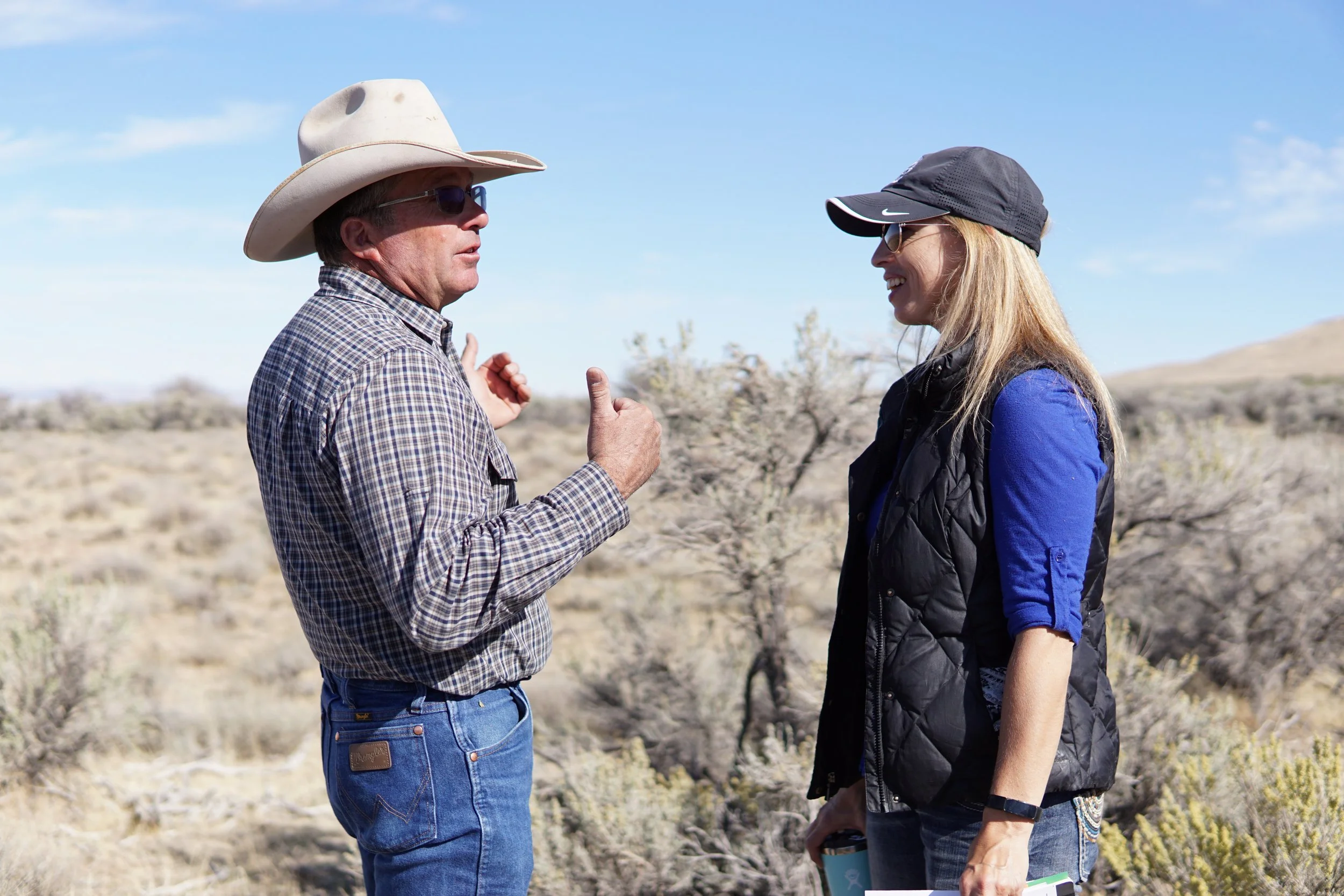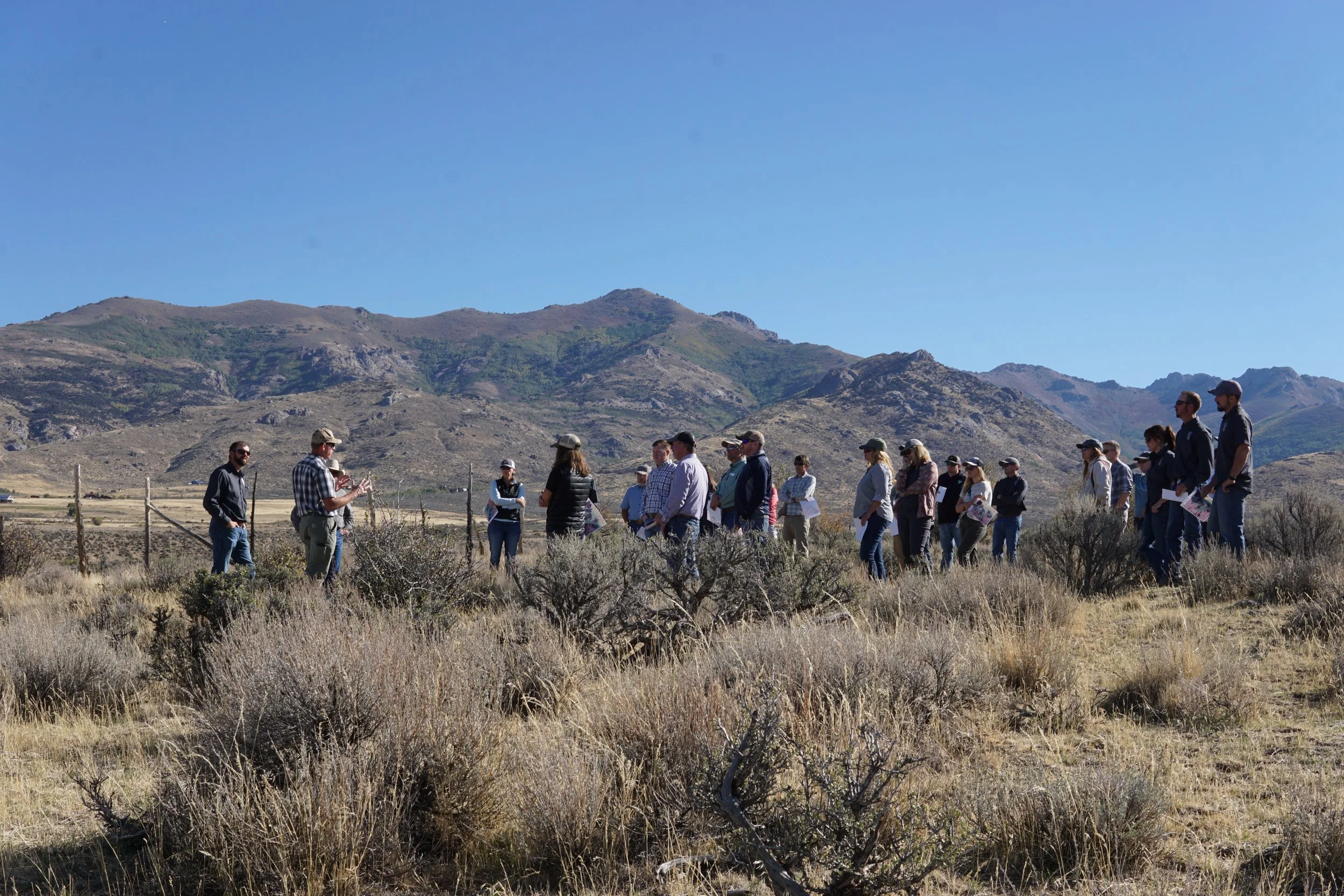Around the Ruby Mountains with the Nevada State Conservation Partnership
Partners walk through the Harrison Pass area during the field tour.
Northeast Nevada is remote and difficult to get to, a fact that most locals will tell you with a smile on their face. Like so much of the West, however, this landscape is not immune to the many challenges facing rangelands and communities that rely on them, whether that threat is invasive annual grass spread or a growing human development moving across the land. Luckily, partners in this corner of Nevada are working together in big ways to meet these challenges.
Tom Barnes, Riordan Ranch owner, and Kim Brackett, IWJV Management Board Member, speak while visiting the Riordan Ranch Conservation Easement.
In late September, partners new and old gathered in Elko for an IWJV Management Board meeting. On day one, the group took a field tour around the Ruby Mountains to visit multiple project sites. These stops on both public and private land gave partners a glimpse into the deeply collaborative nature of the work happening in this region.
A recently-acquired conservation easement was the first stop of the day, showing the group how an unconventional partnership can support intact sagebrush habitat for a multitude of interests, including working lands and migratory big game habitat. Cooperation between Nevada Department of Wildlife, Fallon Naval Air Station, Rocky Mountain Elk Foundation, and the ranch owner made this 2,151-acre Riordan Ranch Conservation Easement possible.
The rest of the day proved to mirror the collaborative success of the first field tour stop. A growing medusahead problem in the Harrison Pass area is being tackled by multiple partners and with many tools, including aerial spraying and ground treatments, with partners keeping their minds open to future opportunities. In the wake of the Corta Fire, which exacerbated the area’s medusa head problem on both public and private lands, partners know the importance of keeping an open mind to new ways of treating this aggressive invasive annual grass.
A map of the pending 12,122-acre Pole Canyon Conservation Easement
“To tackle the invasives-wildfire cycle, we need to be able to pull out all the tools in the toolbox,” said Alan Jenne, Nevada Department of Wildlife habitat division administrator and IWJV Management Board member.
Other field tour stops included the Ruby Lake National Wildlife Refuge, a critical stopover site for migratory birds, the Pole Canyon Conservation and Access Easement, a pending 12,122-acre easement on private land that secures critical habitat for a variety of sensitive wildlife species while providing public access to the remarkable East Humboldt mountain range, and the flood-irrigated wet meadows of Maggie Creek Ranch.
From the spectacular high-elevation country in the Ruby Mountains to the oasis-like wet meadows on Maggie Creek Ranch, the importance of collaborative conservation shone through on each field tour stop.
"The strength of the IWJV’s partnership is just that - our partners. The field tour in northeast Nevada opened everyone’s eyes to what opportunities and future relationships could look like for those working in sagebrush country,” said Ali Duvall, IWJV’s Director of Strategic Partnerships.
The IWJV would like to extend our thanks to the Nevada State Conservation Partnership and additional partners who pulled off an incredible northeast Nevada field tour, including Susan Abele and John Tull with the U.S. Fish and Wildlife Service as well as Alan Jenne and his colleagues with Nevada Department of Wildlife.



